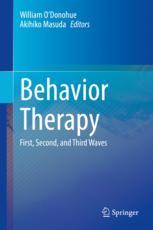History and Revolution of CBT: A Kuhnian Perspective The historian of science Thomas Kuhn (1970) has asserted that, as a science advances, it often evolves into what he called “microcommunities”. For example, Kuhn stated that the perception of the scientific puzzle-solving effectiveness of some paradigm may not be monolithic but can vary across smaller sub-groups within a scientific discipline. Kuhn also stated that in the development of science, “Many episodes will then be revolutionary for no communities, many others for only a single small group, still others for several communities together, a few for all of science” (Kuhn, 1970, p. 253). As some support for Kuhn’s assertion, many within the Skinnerian tradition of behavior therapy did not see the so-called “cogni- tive revolution” as a legitimate scientific revolution (see O’Donohue et al., 2003) and were little influenced by developments within this paradigm. Kuhn also asserted that in what he called “normal science,” it is the scientific community that judges the problem-solving effectiveness of the proposed solutions elaborated by paradigms, and cautioned that the unanimity or size of the community of relevant scientists should not be overestimated. Scientific communities often split into a number of subgroups, some numbering as few as a hundred members or less, sharing a some- what unique, but a still reasonable version of the general paradigm (Kuhn, 1970).
چکیده فارسی
تاریخ و انقلاب CBT: دیدگاه کوهنی مورخ علم توماس کوهن (1970) ادعا کرده است که با پیشرفت علم، اغلب به آنچه که او آن را "جوامع خرد" می نامد، تبدیل می شود. به عنوان مثال، کوهن اظهار داشت که درک اثربخشی حل پازل علمی برخی از پارادایم ها ممکن است یکپارچه نباشد، اما می تواند در میان گروه های فرعی کوچکتر در یک رشته علمی متفاوت باشد. کوهن همچنین بیان کرد که در توسعه علم، «بسیاری از قسمتها برای هیچ جامعهای انقلابی خواهند بود، بسیاری از قسمتهای دیگر فقط برای یک گروه کوچک، برخی دیگر برای چندین جامعه با هم، تعداد کمی برای کل علم انقلابی خواهند بود» (Kuhn, 1970, p. 253). به عنوان برخی از ادعاهای کوهن، بسیاری در سنت رفتار درمانی اسکینر، به اصطلاح «انقلاب شناختی» را یک انقلاب علمی مشروع نمیدانستند (نگاه کنید به O'Donohue و همکاران، 2003) و اندکی تحت تأثیر تحولات قرار گرفتند. در این پارادایم کوهن همچنین اظهار داشت که در آنچه او "علم عادی" نامیده است، این جامعه علمی است که اثربخشی حل مسئله راه حل های پیشنهادی ارائه شده توسط پارادایم ها را قضاوت می کند و هشدار داد که وحدت یا اندازه جامعه دانشمندان مربوطه نباید بیش از حد ارزیابی شود. . جوامع علمی اغلب به تعدادی زیرگروه تقسیم میشوند که تعداد برخی از آنها به صد عضو یا کمتر میرسد، که نسخهای منحصربهفرد، اما همچنان معقول از پارادایم کلی را به اشتراک میگذارند (Kuhn, 1970).
ادامه ...
بستن ...
High worriers and patients with GAD practiced “worrying” differently. Anxiety patients worried about a wide range of topics, their intrusive thoughts were more negative (even in objective assessments), they rated worries as more uncontrollable but had a higher desire to control them, and they had less cognitive confidence than high worriers (Hirsch et al., 2013). How worrying is practiced can also distinguish GAD patients from other anxiety disorders. Researchers also compared GAD patients to panic disorder patients in the study described above. GAD patients reported higher trait anxiety, more pervasive worry, greater propensity to worry, more metacognition about worry (worrying about worrying), and worrying about more topics. In one study, patients with GAD worried about the future more than patients with other anxiety disorders (Dugas et al., 1998a). People suffering from GAD are more likely to chronically worry about minor events (Sanderson & Barlow, 1990). The content of these worries is less focused than in patients with social anxiety disorder, specific phobias, or panic disorder.
ادامه ...
بستن ...










